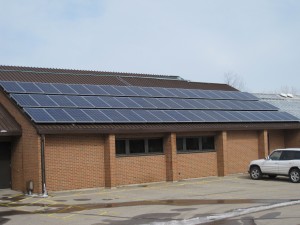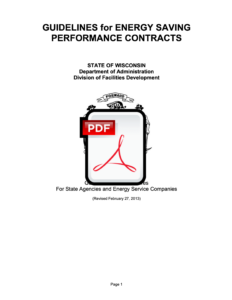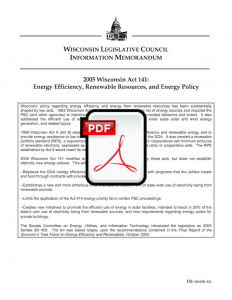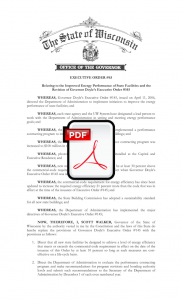Energy Conservation
Energy conservation can be achieved through behavioral changes, operational budget efforts, and through capital projects. Where possible, energy conservation opportunities and efforts are integrated into maintenance, renovation, and remodeling capital projects. Dedicated energy conservation capital projects can be achieved through any of the following three capital project programs.
- Small Projects Program
- All Agency Projects Program
- Performance Contracting Program
Energy conservation capital funding is categorically enumerated as Program Revenue Supported Borrowing (PRSB). Debt service for these projects is funded from the UW System utility account and based on projected savings for specific projects. During the capital budget planning process, each institution identifies potential and future energy conservation projects for implementation. Planning is required to identify scope, budget, energy conservation opportunities. To assist institutions with this planning, multiple energy service contractors are pre-qualified to provide comprehensive consulting and contracting services. Services include scoping and investment grade energy audits, project scope development, project bidding, project construction, commissioning, and energy savings measurement and verification.
The agency initiates the planning process by selecting three contractors to provide scoping level audits of various facilities. Based on the scoping audit results and contractor presentations, one contractor is selected to perform an investment grade audit and potentially construct the project. After the audit is completed and consensus is reached regarding which energy conservation measures will be included in the project, a capital project request and supporting documentation is advanced for Board of Regents and State Building Commission construction authority. All energy conservation projects must meet a 16 years or less simple payback requirement. If the agency cancels the project after the investment grade audit is completed, the agency is required to pay the contractor five cents per GSF audited.
Guidelines for Energy Saving Performance Contracts
Description: A guidance document from the Department of Administration, Division of Facilities Development (DFD) for the program that allows agencies, including UW universities, to hire an Energy Service Company (ESCO) from a list of approved Performance Contractors and complete energy projects that are paid with the energy savings out of existing utility budgets. This document provides policy and procedures for guaranteed energy savings performance contracting as a means to reduce energy consumption and utility costs. This document was issued to guide and establish a process to hire an Energy Service Company from a list of approved contractors.
Audience: State Agencies, UW Universities, and Energy Service Companies
Revision ID: Revised February 27, 2013.
Energy Efficiency, Renewable Resources, and Energy Policy (2005 Wisconsin Act 141)
Description: A Wisconsin Legislative Council Information Memorandum concerning the background, history, and current energy policies in the State of Wisconsin.
Purpose: Describes 1999 Wisconsin Act 9, statewide programs, utility-administered programs, large customer programs, funding, cost recovery and ratepayer impact, role of the Public Service Commission, commitment to community programs, and other provisions related to energy efficiency and renewable resource programs. Also includes a summary of Act 141’s impact on the state energy policy, state facilities and codes, other provisions, and effective dates.
Audience: Board of Regents, UW System Administration, UW Institutions.
Revision ID: Rev 03/2006
Executive Order #63 (State of Wisconsin)
Description: An executive order from the office of the governor relating to the improved energy performance of state facilities and the revision of Governor Jim Doyle’s Executive Order #145.
Purpose: Requires that all new state facilities be designed to meet or exceed commercial code energy efficiency by at least 10 percent and directs the Department of Administration to evaluate the performance contracting program to make capital budget recommendations each biennium. This executive order replaces the all previous executive orders on energy efficiency.
Audience: Board of Regents, UW System Administration, UW Institutions.
Revision ID: Rev 04/2006
Related Policy Links
Physical Development
Board of Regents
UW System Administration
- Sustainable Building Guidelines (Rev 2024-12)
State Building Commission
- Policies and Procedures Manual (pp. 21-23)





